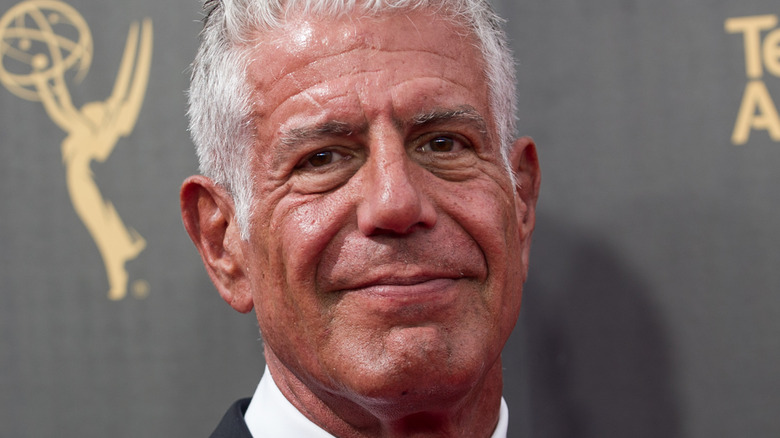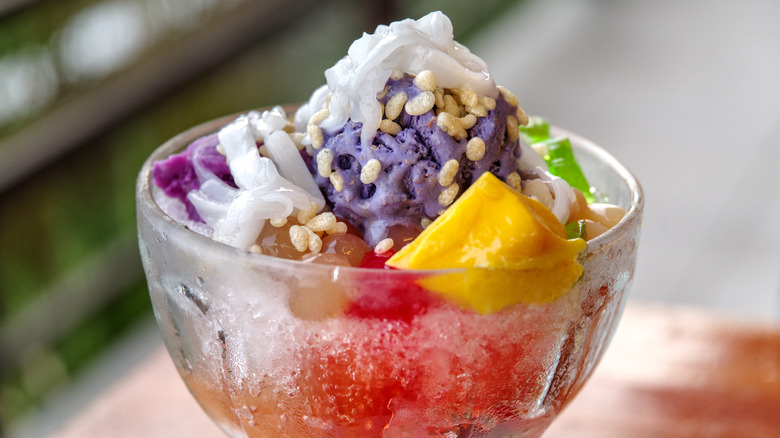The Filipino Dessert That Anthony Bourdain Loved
Anthony Bourdain never hid his fascination with Filipino food, and he first flirted with the fast-food take on the country's cuisine in 2013 on the first season of "Parts Unknown," when he visited a Jollibee in L.A. with Korean-American chef Roy Choi. And it was there that Choi introduced Bourdain to the chain's version of the iconic frozen dessert, halo-halo.
Halo-halo, which is Tagalog for "mix-mix," can be made with a variety of different ingredients, including sweet beans, gulaman (an Asian gelatin produced from seaweed), corn, kaon (sweet palm fruit), and sweetened banana. It might also have nuggets of jackfruit, pineapple, and strips of sweetened coconut, topped heavily with shaved ice, scoops of ube (purple yam) ice cream, and slabs of creamy flan, all of which are bathed in evaporated milk.
Bourdain was fascinated by the colorful dessert, whose ingredients, to him, seemed fairly random. Bourdain waxes poetic on the program, saying, "Dig deep and you hit delicious stratas of red beans, white beans, and chickpeas, cubes of red and green Jell-O, young white coconut, shaved ice ... flan. It makes no god****ed sense at all. I love it."
Halo-halo's origins and Asian offshoots
Unlike many of the Philippines' best-loved dishes, halo-halo doesn't have its roots in Spain, Mexico, or the galleon trade, but in Japan. It's believed to have been inspired by kakigori, a traditional Japanese shaved ice dessert that includes fruit syrup, condensed milk, or green tea. Halo-halo's Japanese roots may also explain why different kinds of the dish exist in different parts of Southeast Asia. Singaporeans have ais kachang; Malaysians have ABC or ais batu campur — though these contain slightly different ingredients, including sweet corn, peanuts, mango, grass jelly, and cendol, which is made of sweet flour jelly. Thailand also has its version of halo-halo, known as nam-kang-sai, which contains grass jelly, young coconut, jackfruit, and palm seed.
Jollibee's halo-halo may have been the first Bourdain ever had, but unfortunately, it's not something we can enjoy at a moment's notice since the icy dessert was only offered for a limited time at the chain that, as Bourdain puts it, during a second on-screen visit, pops up "wherever there are homesick Filipinos." Still, there is always a chance it might make a comeback.

